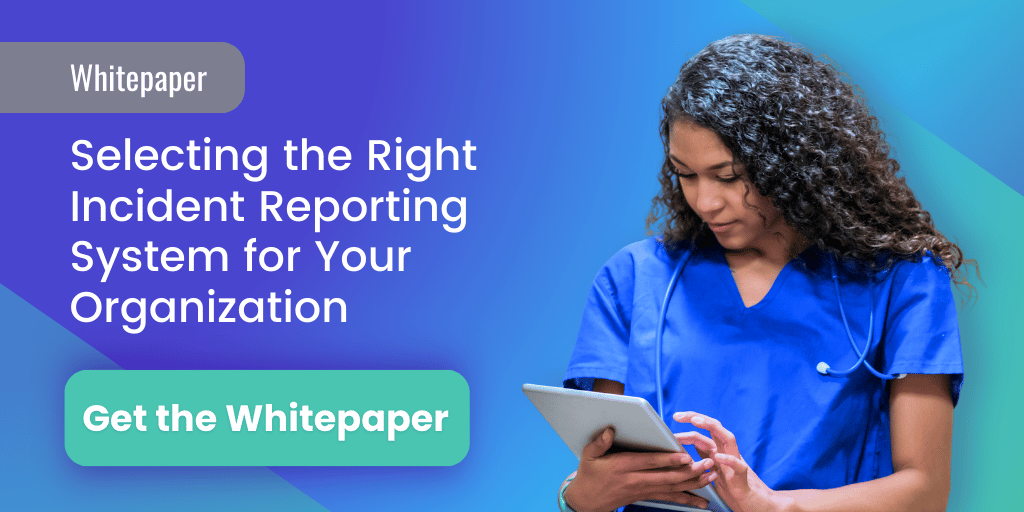5 min read
Reducing Medical Errors with RMIS: Strategies for Healthcare Providers
Performance Health Partners
March 24, 2025

Medical errors pose a significant challenge in healthcare, affecting patient safety and increasing costs. To mitigate these risks, healthcare organizations are turning to Risk Management Information Systems (RMIS) as a proactive solution. This blog explores how RMIS can help reduce medical errors, enhance patient safety, and improve overall healthcare outcomes.
The Impact of Medical Errors
Medical errors are a leading cause of preventable harm in healthcare. One study reported that approximately 400,000 hospitalized patients experience some preventable harm annually, while another stated that over 200,000 patients die every year due to preventable medical errors.

Common medical errors include:
- Medication Errors: Errors resulting from incorrect dosages or medications, or adverse drug interactions. According to the Academy of Managed Care Pharmacy, medication errors are among the most common medical errors and harm at least 1.5 million people every year.
- Diagnostic Errors: Mistakes that involve delayed, incorrect, or missed diagnoses. Johns Hopkins Medicine stated that in the United States, an estimated 795,000 patients die or are permanently disabled due to diagnostic errors annually.
- Surgical Errors: Errors that occur during surgical procedures, such as wrong-site surgery. It has been estimated that wrong-site surgeries in particular occur around 40 times per week in the U.S.
- Healthcare-Associated Infections (HAIs): Errors associated with inadequate sterilization and failure to follow infection control protocols, that contribute to infections such as sepsis or pneumonia. The United States Center for Disease Control and Prevention states that nearly 1.7 million hospitalized patients acquire HAIs during treatment annually and that more than 98,000 patients die from HAIs.
- Falls and Physical Injuries: Mistakes involving inadequate patient monitoring, poor facility design, and failure to use fall prevention measures, leading to preventable patient falls, especially among elderly or mobility-impaired individuals. According to the Society of Hospital Medicine, an estimated 700,000 to 1,000,000 patient falls occur every year in U.S. hospitals alone. 25-33% lead to injuries, and an estimated 11,000 lead to deaths.
- Equipment Failures: Errors related to malfunctioning medical equipment or improper use. Every year, the U.S. Food and Drug Administration receives over 2 million medical device reports of suspected device-associated deaths, injuries, and malfunctions.
- Communication Failures: Miscommunication or lack of communication among healthcare providers or between patients and providers, leading to incorrect treatment.
Medical errors also impose substantial financial and human costs. Studies suggest that preventable adverse events cost the U.S. healthcare system approximately $20 billion annually. Beyond financial implications, these errors result in prolonged hospital stays, disability, and loss of trust in healthcare institutions.
Understanding RMIS
What is an RMIS?
A Risk Management Information System (RMIS) is a specialized software solution designed to collect, analyze, and manage risk-related data in healthcare settings. It helps organizations track incidents, identify trends, and implement preventative measures to enhance patient safety.
An effective RMIS includes:
- Incident Reporting: An RMIS enables healthcare providers to systematically capture and document both actual errors and near-miss events. By facilitating structured reporting, the system helps identify recurring patterns and potential risks before they lead to significant harm. A robust incident reporting mechanism ensures transparency and accountability while encouraging a culture of continuous improvement in patient safety.
- Data Collection: RMIS streamline the collection of critical healthcare data, including patient records, medication administration logs, equipment usage, and incident reports. By consolidating data from various sources, the system provides a comprehensive overview of potential risk factors, allowing healthcare professionals to track trends and assess vulnerabilities within their organizations. Effective data collection forms the foundation for meaningful analysis and informed decision-making.
- Risk Analysis: The software supports comprehensive risk analysis by evaluating reported incidents, historical data, and environmental factors that may contribute to patient safety concerns. The system categorizes risks based on severity, frequency, and impact, helping healthcare organizations prioritize mitigation strategies. By understanding the root causes of errors, healthcare providers can develop evidence-based policies to prevent future occurrences.
- Real-time Monitoring: One of the most powerful features of an RMIS is its ability to provide real-time monitoring. This functionality allows healthcare professionals to track key risk indicators continuously and receive immediate notifications when deviations from standard protocols occur. By offering instant visibility into potential threats, an RMIS empowers providers to take swift corrective action, reducing the likelihood of adverse patient outcomes.
Benefits of RMIS
- Enhanced Patient Safety: An RMIS plays a critical role in identifying risks before they result in harm. By continuously monitoring healthcare environments, it can detect patterns that indicate potential medical errors, such as incorrect medication dosages, procedural inconsistencies, or equipment malfunctions. With early identification, healthcare providers can implement corrective measures proactively, significantly reducing the likelihood of patient harm and improving overall care outcomes.
- Data-Driven Decision Making: An RMIS leverages advanced analytics to provide healthcare organizations with actionable insights. By analyzing incident reports, patient safety trends, and operational inefficiencies, RMIS help administrators make informed decisions to improve healthcare delivery. Instead of relying on assumptions, organizations can use concrete data to enhance protocols, streamline workflows, and allocate resources more effectively, leading to better patient outcomes and increased operational efficiency.
- Regulatory Compliance: Healthcare providers must adhere to strict federal and state regulations regarding patient safety, risk management, and data reporting. RMIS simplify this process by automating documentation, ensuring accurate record-keeping, and generating compliance reports as required by regulatory bodies such as the Centers for Medicare & Medicaid Services (CMS) and the Joint Commission. By staying compliant with evolving healthcare regulations, organizations can avoid penalties, maintain accreditation, and foster trust among patients and stakeholders.
- Cost Reduction: Medical errors contribute to high financial burdens for healthcare institutions, including legal claims, malpractice settlements, and increased hospital readmission rates. RMIS help reduce these costs by preventing errors before they occur, leading to fewer liability claims and less financial strain. Additionally, by improving operational efficiency and reducing waste, RMIS enable healthcare facilities to allocate budgets more effectively, ensuring that resources are directed toward patient care rather than addressing preventable errors.

Strategies for Implementing RMIS
Integration with Healthcare Systems
For a Risk Management Information System to be effective, it must integrate seamlessly with existing Electronic Health Records (EHRs), pharmacy management systems, and other IT infrastructures. Seamless integration enables automated data sharing, improving efficiency in incident reporting, medication tracking, and compliance monitoring. Healthcare organizations should work closely with IT teams and RMIS vendors to ensure compatibility and interoperability with existing digital health tools.
Training and Education
Training staff on RMIS functionalities is crucial for successful implementation. Hospitals and healthcare organizations should conduct regular workshops and hands-on training to familiarize healthcare providers with the system. Additionally, leadership should promote a culture of safety by encouraging staff to actively use RMIS tools for reporting and mitigating risks. Ongoing training and refresher courses can help healthcare teams stay updated on system enhancements and best practices.
Compliance and Regulations
RMIS assist healthcare organizations in complying with key regulatory requirements, ensuring that institutions meet national and state-mandated patient safety standards. Compliance with regulations not only mitigates legal risks but also enhances operational efficiency and accreditation status. By automating compliance tracking, RMIS enable healthcare organizations to generate accurate reports for audits and regulatory reviews, reducing the administrative burden on staff and ensuring adherence to evolving healthcare policies.
Case Study in Successful Implementation
MHC Healthcare, a Federally Qualified Health Center (FQHC) in Marana, Arizona, implemented an RMIS to replace its outdated system.
The use of an RMIS derived several key insights:
- User-Friendly Design Increases Reporting: A complex, paper-based system discouraged staff from reporting incidents, limiting safety oversight. By adopting a user-friendly RMIS, MHC made reporting easier, leading to a 60% increase in incident reports and strengthening their safety culture.
- Customization Improves Accuracy: A flexible RMIS allowed MHC to create custom incident categories, such as vaccine errors and security incidents. This enhanced tracking enabled targeted interventions, reducing vaccine errors by 81% and improving workflow efficiency.
- Real-Time Data Enables Proactive Decisions: Access to real-time dashboards helped MHC quickly identify safety risks. For example, security incident tracking revealed problem areas, leading to proactive measures like adding security personnel to high-risk locations.
Final Thoughts
Medical errors remain a pressing issue, but RMIS offer a viable solution to enhance risk management in healthcare and patient safety. By integrating RMIS into healthcare systems, training staff, and ensuring compliance, providers can mitigate risks effectively.
Ready to get started? Connect with our team to learn how our award-winning incident management system can help your organization meet its safety goals.



